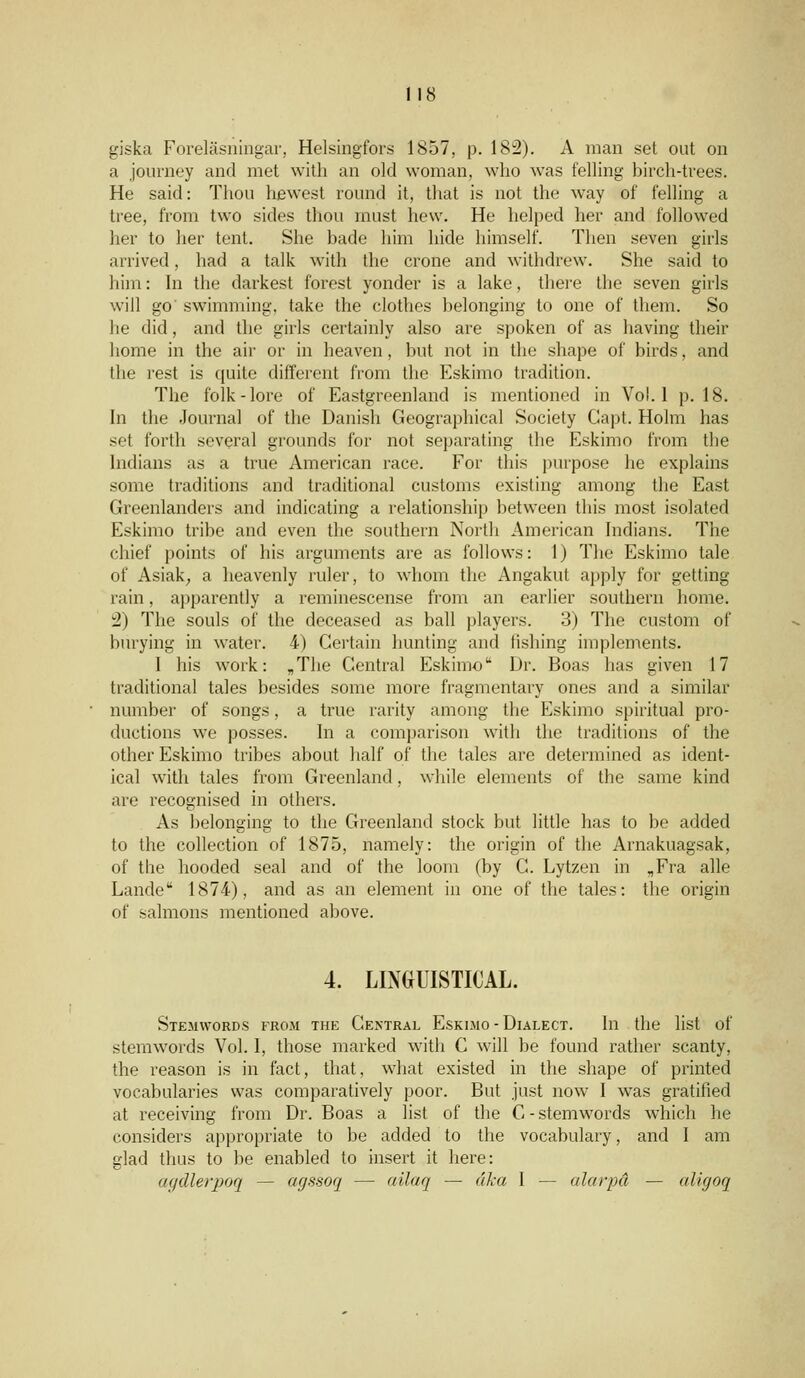
Full resolution (JPEG) - On this page / på denna sida - Notes - 3) Traditions - 4) Linguistical

<< prev. page << föreg. sida << >> nästa sida >> next page >>
Below is the raw OCR text
from the above scanned image.
Do you see an error? Proofread the page now!
Här nedan syns maskintolkade texten från faksimilbilden ovan.
Ser du något fel? Korrekturläs sidan nu!
This page has been proofread at least once.
(diff)
(history)
Denna sida har korrekturlästs minst en gång.
(skillnad)
(historik)
Forelasningar, Helsingfors 1857, p. 182). A man set out on
a journey and met with an old woman, who was felling birch-trees.
He said: Thou hewest round it, that is not the way of felling a
tree, from two sides thou must hew. He helped her and followed
her to her tent. She bade him hide himself. Then seven girls
arrived, had a talk with the crone and withdrew. She said to
him: In the darkest forest yonder is a lake, there the seven girls
will go swimming, take the clothes belonging to one of them. So
he did, and the girls certainly also are spoken of as having their
home in the air or in heaven, but not in the shape of birds, and
the rest is quite different from the Eskimo tradition.
The folk-lore of Eastgreenland is mentioned in Vol. 1 p. 18.
In the Journal of the Danish Geographical Society Capt. Holm has
set forth several grounds for not separating the Eskimo from the
Indians as a true American race. For this purpose he explains
some traditions and traditional customs existing among the East
Greenlanders and indicating a relationship between this most isolated
Eskimo tribe and even the southern North American Indians. The
chief points of his arguments are as follows: 1) The Eskimo tale
of Asiak, a heavenly ruler, to whom the Angakut apply for getting
rain, apparently a reminescense from an earlier southern home.
2) The souls of the deceased as ball players. 3) The custom of
burying in water. 4) Certain hunting and fishing implements.
In his work: „The Central Eskimo“ Dr. Boas has given 17
traditional tales besides some more fragmentary ones and a similar
number of songs, a true rarity among the Eskimo spiritual
productions we possess. In a comparison with the traditions of the
other Eskimo tribes about half of the tales are determined as
identical with tales from Greenland, while elements of the same kind
are recognised in others.
As belonging to the Greenland stock but little has to be added
to the collection of 1875, namely: the origin of the Arnakuagsak,
of the hooded seal and of the loom (by C. Lytzen in „Fra alle
Lande“ 1874), and as an element in one of the tales: the origin
of salmons mentioned above.
<< prev. page << föreg. sida << >> nästa sida >> next page >>